I am using the R programming language. I want to learn how to measure and plot the run time of difference procedures as the size of the data increases.
I found a previous stackoverflow post that answers a similar question: Plot the run time of three functions
It seems that the "microbenchmark" library in R should be able to accomplish this task.
Suppose I simulate the following data:
#load libraries
library(microbenchmark)
library(dplyr)
library(ggplot2)
library(Rtsne)
library(cluster)
library(dbscan)
library(plotly)
#simulate data
var_1 <- rnorm(1000,1,4)
var_2<-rnorm(1000,10,5)
var_3 <- sample( LETTERS[1:4], 1000, replace=TRUE, prob=c(0.1, 0.2, 0.65, 0.05) )
var_4 <- sample( LETTERS[1:2], 1000, replace=TRUE, prob=c(0.4, 0.6) )
#put them into a data frame called "f"
f <- data.frame(var_1, var_2, var_3, var_4)
#declare var_3 and response_variable as factors
f$var_3 = as.factor(f$var_3)
f$var_4 = as.factor(f$var_4)
#add id
f$ID <- seq_along(f[,1])
Now, I want to measure the run time of 7 different procedures:
#Procedure 1: :
gower_dist <- daisy(f[,-5],
metric = "gower")
gower_mat <- as.matrix(gower_dist)
#Procedure 2
lof <- lof(gower_dist, k=3)
#Procedure 3
lof <- lof(gower_dist, k=5)
#Procedure 4
tsne_obj <- Rtsne(gower_dist, is_distance = TRUE)
tsne_data <- tsne_obj$Y %>%
data.frame() %>%
setNames(c("X", "Y")) %>%
mutate(
name = f$ID)
#Procedure 5
tsne_obj <- Rtsne(gower_dist, perplexity =10, is_distance = TRUE)
tsne_data <- tsne_obj$Y %>%
data.frame() %>%
setNames(c("X", "Y")) %>%
mutate(
name = f$ID)
#Procedure 6
plot = ggplot(aes(x = X, y = Y), data = tsne_data) + geom_point(aes())
#Procedure 7
tsne_obj <- Rtsne(gower_dist, is_distance = TRUE)
tsne_data <- tsne_obj$Y %>%
data.frame() %>%
setNames(c("X", "Y")) %>%
mutate(
name = f$ID,
lof=lof,
var1=f$var_1,
var2=f$var_2,
var3=f$var_3
)
p1 <- ggplot(aes(x = X, y = Y, size=lof, key=name, var1=var1,
var2=var2, var3=var3), data = tsne_data) +
geom_point(shape=1, col="red")+
theme_minimal()
ggplotly(p1, tooltip = c("lof", "name", "var1", "var2", "var3"))
Using the "microbenchmark" library, I can find out the time of individual functions:
procedure_1_part_1 <- microbenchmark(daisy(f[,-5],
metric = "gower"))
procedure_1_part_2 <- microbenchmark(as.matrix(gower_dist))
I want to make a graph of the run times like this:
https://umap-learn.readthedocs.io/en/latest/benchmarking.html
Question: Can someone please show me how to make this graph and use the microbenchmark statement for multiple functions at once (for different sizes of the dataframe "f" (for f = 5, 10, 50, 100, 200, 500, 100)?
microbench(cbind(gower_dist <- daisy(f[1:5,-5], metric = "gower"), gower_mat <- as.matrix(gower_dist))
microbench(cbind(gower_dist <- daisy(f[1:10,-5], metric = "gower"), gower_mat <- as.matrix(gower_dist))
microbench(cbind(gower_dist <- daisy(f[1:50,-5], metric = "gower"), gower_mat <- as.matrix(gower_dist))
etc
There does not seem to be a straightforward way to do this in R:
mean(procedure_1_part_1$time)
[1] NA
Warning message:
In mean.default(procedure_1_part_1) :
argument is not numeric or logical: returning NA
I could manually run each one of these, copy the results into excel and plot them, but this would also take a long time.
tm <- microbenchmark( daisy(f[,-5],
metric = "gower"),
as.matrix(gower_dist))
tm
Unit: microseconds
expr min lq mean median uq max neval cld
daisy(f[, -5], metric = "gower") 2071.9 2491.4 3144.921 3563.65 3621.00 4727.8 100 b
as.matrix(gower_dist) 129.3 147.5 194.709 180.80 232.45 414.2 100 a
Is there a quicker way to make a graph?
Thanks

